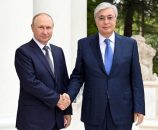Nisar Ahmed
A benign tumor is not lethal before it transforms into a malignant cancer. The sooner it is diagnosed and treated; the less painful it is to effectively cure the disease. The prevailing situations hint that the economic woes of Pakistan are turning into a “malignant cancer” with little signs of recovery. Is an economic slump around the corner? Is there any miraculous solution to its problems?
Drastic situations call for drastic measures; situations were drastic long ago, however the measures have yet to become drastic. Ongoing uncertainties faced by Pakistan, videlicet, inhouse political upheaval, tumbling rupee, skyrocketing POL prices, spiraling inflation with extreme state of poverty, fading International Monetary Fund (IMF) assistance and the geopolitical threats are all the monsters which need an immediate and a decisive end.
The Pakistan Bureau of Statistics reported an inflation figure of 24.93% for the month of July which is the highest in the last 14 years; last time it hovered around this level when the whole world was witnessing the great recession of 2008-09. According to Pakistan Maternal Nutrition Strategy 2022-27 Report, 37% of households in Pakistan face food insecurity overall, with rates of over 50% in several regions and, two-thirds of the population are unable to afford a nutritious diet with their current food expenditure. Unfortunately, empty stomachs accept no explanations, and the insouciant attitude of the power holders playing peekaboo games with the opposition benchers has attracted a public ire; and it might not take long before this outrage turns into a public unrest, as also witnessed in Sri Lanka for the same reasons.
Representatives from Pakistan, despite their holy obedience to the tough terms by IMF, have failed to convince IMF officials to release $1.2 billion as against the originally planned $2 billion tranche. IMF has shown no mercy while objecting over salary increases, tax and subsidy reliefs on POL products and the existing power and gas price structures. In a latest development, the IMF has even further insisted upon arranging alternative options to meet the financing gap, which the finance minister has claimed to have met through delayed payment arrangements for fuel products. Shall that be sufficient to convince the officials or would they need any further assurance in the form of any increased burden on the masses? Apparently, delay in convincing the IMF officials fails to promise a relieving assurance ahead.
Along with above problems, the rupee has witnessed a massive dive hitting the rock bottom level and this has adversely impacted the foreign trade of the country. Asian Development Bank (ADB) projected a Debt-GDP ratio of more than 70% in the coming years and the culprit behind this burgeoning figure is a high debt servicing cost. If the existing downtrend of the rupee against dollar continues, the existing estimated figures would deteriorate further, turning the “nightmare” of debt repayment default into a reality. Recent default by our island neighbor, Sri Lanka, should never fail to remind us of the ill-fate of a debt-laden economy and the need for a contingency plan.
Economic gurus of each of the preceding governments have not been much unsuccessful in executing a comprehensive plan to fight these evils. Is there any door which they failed to knock as of now? With no response from the doors already knocked, resorting to the use of alchemic tools of the State Bank of Pakistan (SBP), demonetization and dollarization, seems a viable option.
Demonetization is the withdrawal of old currency notes and issuance of new series. SBP last issued a new series of bank notes in 2005-08 however ordered the withdrawal of the existing notes after long nine years of the issuance of new series without any restrictions on conversion, leaving the purpose of demonetization nothing, but a costly give and take exercise. A need of the hour necessitates that the SBP must execute a surprise demonetization of Rs. 5,000 notes and that too within a short stretch of time with certain prerequisites; principally, the conversion of high value transactions mandating the disclosure of legitimate trail of funds along with anti-money laundering declarations including scrutiny probes. If handled with care, this painstaking exercise would serve as a multifaceted defense not only in grappling the monster of inflation through restraining underground market activity but it would also help in revealing valuable information for tracing tax evasions and money laundering in fighting corruption. Corruption is a serious crime in Pakistan, as Transparency International rated Pakistan at 140th position out of 180 countries on the list for Corruption Perception Index.
The alarmingly amplified demand for dollar in the country was capable enough to spur a storm in the economy, but as they say, every cloud has a silver lining, it is the right time for SBP to play its ace of spade through dollarization; the official inclusion of dollars in the country’s financial system. Huge many blessings await the decision to adopt a dual currency system. The measure would serve a “big push” helping in redemption from the biggest problem of Pakistan, which is a low foreign investment. As per the data reported by SBP, FDI stood at $1,820 million for 2021 (2020: $2,598 million) and an international rating agency downgraded Pakistan’s outlook from stable to negative mainly due to thin liquidity position and falling currency. Analysts believe that the trust and the inflow of foreign capital would head their way to Pakistan once investor optimism is restored which has dropped owing to falling rupee and global inflation. An option to trade in dual currencies is expected to shed their fears of losing investments due to any further devaluation.
If chanting the same old incantation since long ago is not bringing any good fortune to Pakistan then the economic magicians must learn to disbelieve the old magic spells before they adapt a pragmatic approach to the problems.




